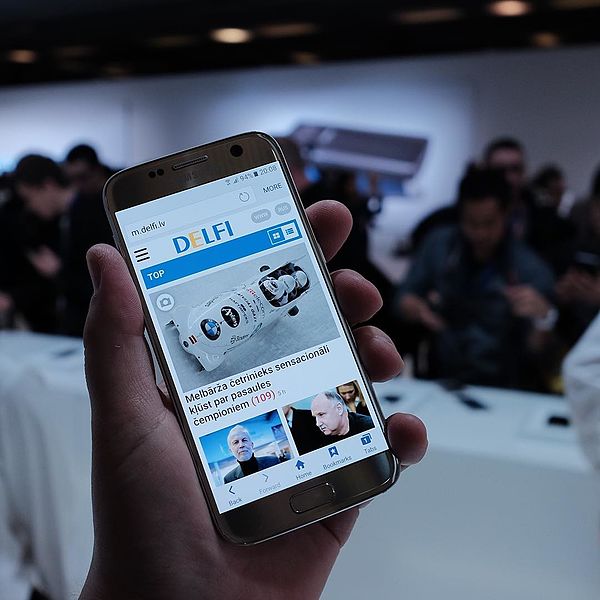Taking the Plunge: What Waterproof Really Means in Gadgets
“Gadgets. They’re powerful devices that help man exceed their potential. Because of gadgets, people can communicate from far distances. They can record videos, snap photos, access the internet and…” Ooops. Looks like your gadget fell into the toilet bowl again.
Just like superheroes, gadgets have an Achilles heel — water. It’s an inevitable reality. At some point in our lives, we’ve spilled coffee on our gadget, plopped it in the toilet bowl, and dropped it on the beach. Even getting our gadgets soaked in the rain have rendered it useless afterwards.
This 2016, tech manufacturers have introduced new innovations including efforts in making gadgets more resilient to water damage. Big names like Samsung, Sony, and Apple are on the job in providing consumers with smartphones and devices that will ultimately survive the plunge. But before you spend your bucks on these new gadgets, here are some things you should know.
The case with watches
Gadgets surviving water exposure or immersion is not a new thing. Watches have carried this feature decades ago especially in diver’s watches. Casio for example, had its own classification for water-resistance.
- If the watch says ‘water resistant’, it simply means that the watch will continue to work even when splashed with water (e.g. rain) but not prolonged exposure or immersion.
- If the watch says ‘50 m water resistant’, it can survive some water exposure like when showering or going for a swim but not when scuba diving or snorkeling.
- If the watch says ‘100 m water resistant’, it can be used for some water sports like snorkeling and swimming.
- If the watch says ‘200-300 m water resistant’, it can be used for almost any water sport like swimming, diving, surfing, and scuba diving.
Water-resistant, Water-repellent or waterproof?
But not all gadgets have a classification system like Casio does. Sometimes, it only indicates ‘water-resistant’, ‘water-repellent’, or ‘waterproof’. Sneaky marketing tactics can mislead some customers by interchanging terms. But HZO distinguishes these three terms very well.
If a gadget says it is ‘water-resistant’, it usually means that water won’t easily penetrate the gadget. It can withstand surface contact with water like splashes but the gadget is still prone to water damage. You definitely cannot take water resistant gadgets for a swim or even under a shower.
If a gadget says ‘water-repellent’, it usually has some sort of protective coating to prevent water from penetrating the device. Fabrics fused with nanotechnology for example, can effectively repel water without getting wet. Water will just dribble off from the fabric. A gadget spray like NeverWet will also offer a similar effect to gadgets when sprayed with it. However, it is possible that water-repellent gadgets will not survive the pressure of water when submerged.
If a gadget says ‘waterproof’, it offers some sort of credibility to it because it has undergone testing and ISO standards certification. Gadgets under this category though have no same level of waterproofing. Gadgets specify the limits and buyers must be clearly aware of this. Just because a gadget is waterproof doesn’t mean you can take it for scuba diving.
In fact, it would be best to refer to the IP code rating of waterproof gadgets.
Knowing IP code ratings
IP stands for International Protection or Ingress Protection. It is a standard classification system for defining devices that are “waterproof”. IP ratings are usually presented as “IP (x)(y)” where (x) is the level of protection against solid objects like dust and (y) is the level of protection against liquids like water.
The scale for solids is from 0 to 6, where 0 means no level of protection against solids and 6 means ‘dust tight’ or not even dust can penetrate the device. The scale for liquids is from 0 to 8 where 0 stands for no protection against water and 8 means the water can be submerged beyond one meter underwater but the conditions are specified by the manufacturer. If the IP code has an X instead of a number, that means the gadget was not tested for that specific type of protection.
A lot of gadgets already carry an IP code to qualify the extent of their “waterproof” protection.
The Apple Watch for example, has a code of IPX7. This means it has not been tested for protection against solids but a 7 rating means it will survive water immersion of up to one meter for up to 30 mins as specified by Apple.
The Samsung Galaxy S7 model, which just dropped to the consumer market this March 2016, boasts an IP68 rating, the highest on the scale. This means the smartphone is dust tight and can be submerged underwater of up to 1.5 meters for 30 minutes.*
*This claim has been tested by SquareTrade and results have shown that after being submerged under water, the phone’s audio became “muffled and distorted.”
So the next time you plan to buy a ‘waterproof’ gadget, don’t just believe the vague labels. Make sure to check the IP rating and read the fine print for warranty terms. Some gadgets will void warranty if it has been sunk or submerged.

